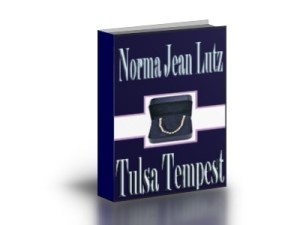Imagery Can be Tricky
“I know what I mean, but I don’t know how to describe it.”
I’ve often heard this comment from my student writers as they struggle to create imagery in their novels. And it’s true that imagery can be a tricky aspect of novel writing.
While the framework of a novel consists of plot, style, tone, characterization, and setting, I want to suggest that in the end, it’s the imagery that makes a story stand out – to glow in its own light.
What to Include; What to Leave Out
A well-written description will naturally give birth to imagery. But then the next question from that novice novelist will be, “How do I know which details to include and which to leave out?”
The answer – hopefully it won’t sound too simplistic – is this:
- Leave in what impresses you the most
- Leave in what you see clearly
- Leave everything else out
![]() Your Third Eye
Your Third Eye
It is our eyes that convey images to our brains. This means that in order to convey images to the reader, it will be necessary to develop a sort of third eye. This is the eye of your imagination and memory.
As the writer, you need not assume the entire burden of imagery. Once you start straining to describe everything down to the most intricate detail (with your trusty Thesaurus ever at the ready), you may become guilty of robbing the reader of the pleasure of seeing the details in their own mind’s eye.
See the Scene with the Third Eye
In my historical novel, Tulsa Tempest (set in 1921), a sudden summer rainstorm catches Tessa unawares as she’s walking home from an evening meeting at the church. At the height of the storm, she is accosted by the despicable man to whom her bootlegger father had promised her in marriage. The one she had moved to Tulsa to escape. In the scene, the fear, terror, and panic can all be sensed and palpably felt and all due to the imagery.
Before she was halfway home, the wind was whipping in crazy directions, and the rain had started to fall. Tree limbs bent and swayed in the wind. She heard one snap. She’d surely be drenched before she reached home. Hopefully there were no twisters in the area.
The blare of a horn sounded from the street as an old farm truck rumbled up. Through the rain, she saw the window being rolled down. Terror gripped her as she saw the hooded eyes of Hod Latham. Pastor Stedman had been right.
“There you is, little lady!” he called out through the wail of the wind and the crash of the thunder. “Me and my friend, Ralph, been searching all over this blasted city for you.” The door to the old truck slowly creaked opened. “You know what month this is, Tessa Jurgen? This here is May. And this here’s the month you’re to be my woman. I come to collect the debt owed me.”
Her mind raced. She knew no one on this street. She screamed as his square hulk came across the street toward her. The screams were drowned out by the wind. She broke to run, but she was no match for him. As he grabbed for her, she tripped and fell. Cold water from the puddles soaked through to her skin. Hod stood there staring down at her. A skinny older man was now by his side.
Notice many details are not supplied in this scene. When writing the passage, I simply closed my eyes and wrote the scene as I saw it. The rest is left to the reader’s imagination.
Don’t Get in a Hurry
Training the novelist’s eye for imagery can be done by simply sitting still, closing your eyes, and playing a scene over and over in your mind. Don’t get in a hurry. Give it time to develop fully. What do you see? What do you hear? What do you smell? What do you feel?
Once the image becomes clear and vivid, there’ll be no need for statements such as:
- She was frightened.
- She panicked.
- It was a bad storm. (Or it was a really bad storm)
Once the image becomes clear and vivid, you’ll grow accustomed to this feeling – the joy and pleasure of imagery creation. Now it’s time to  re-experience the scene and write it down quickly.
re-experience the scene and write it down quickly.
As you create this pattern of imagery creation, practice, practice, and then practice some more. Your power to create dramatic imagery must be trained and exercised just like a physical muscle.
One word of caution – as you become more adept in your own ability to add quality imagery, beware of drowning the reader in textures. Always leave space for the reader to partner with you in creating their own imagery as they read. 
It’s Finally Here!
Flower in the Hills is now in paperback
Books in this Collection are Clean Teen Reads
Clean Teen Reads = Parents can trust them; teens can trust them!

Photo Credits: © Robcocquyt | Dreamstime.com – Aquatic Thoughts Photo

